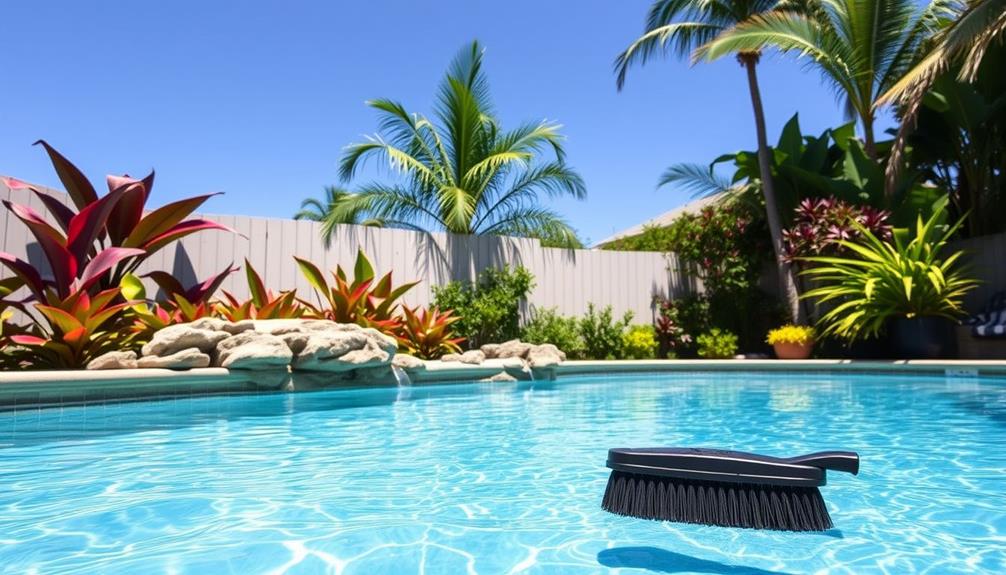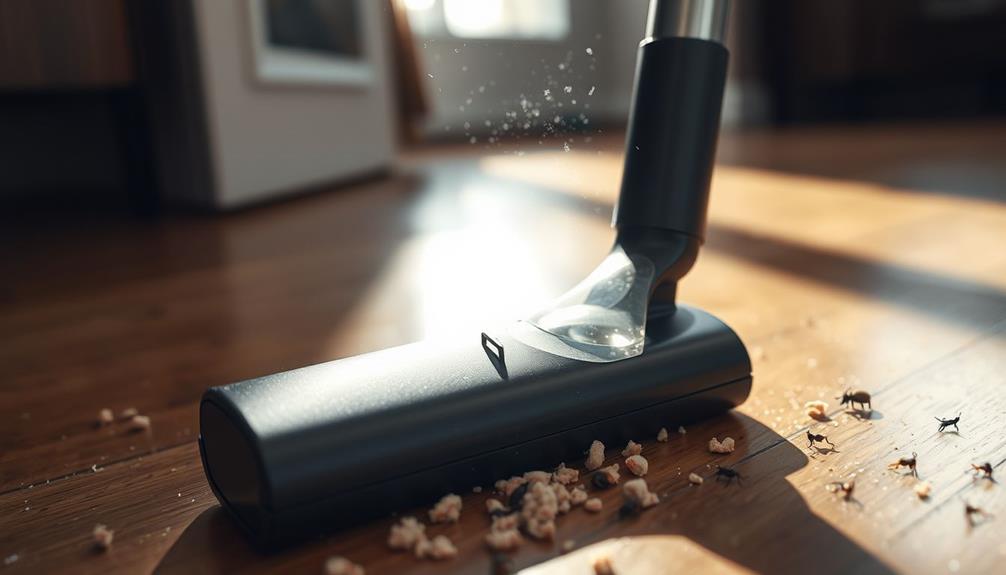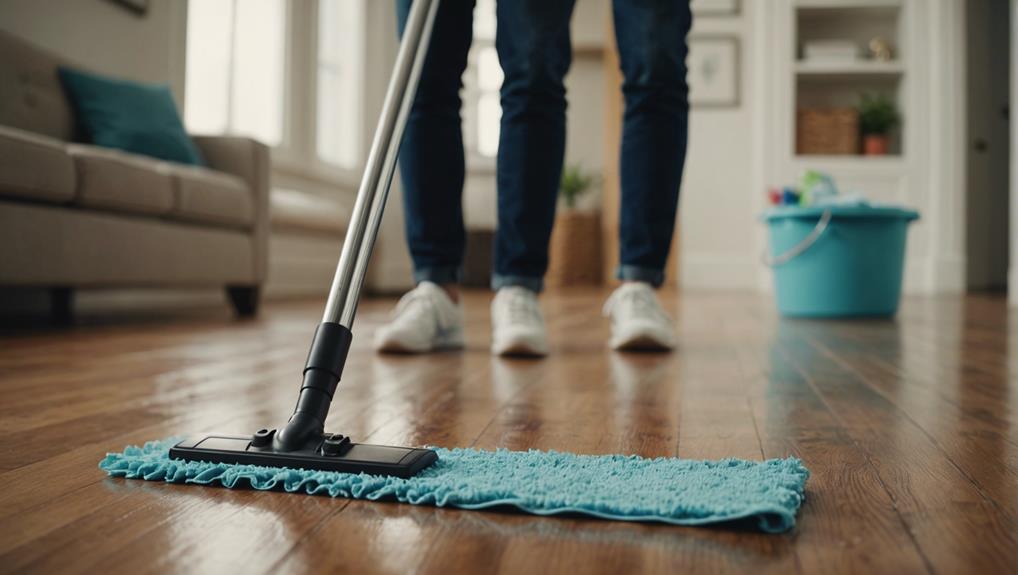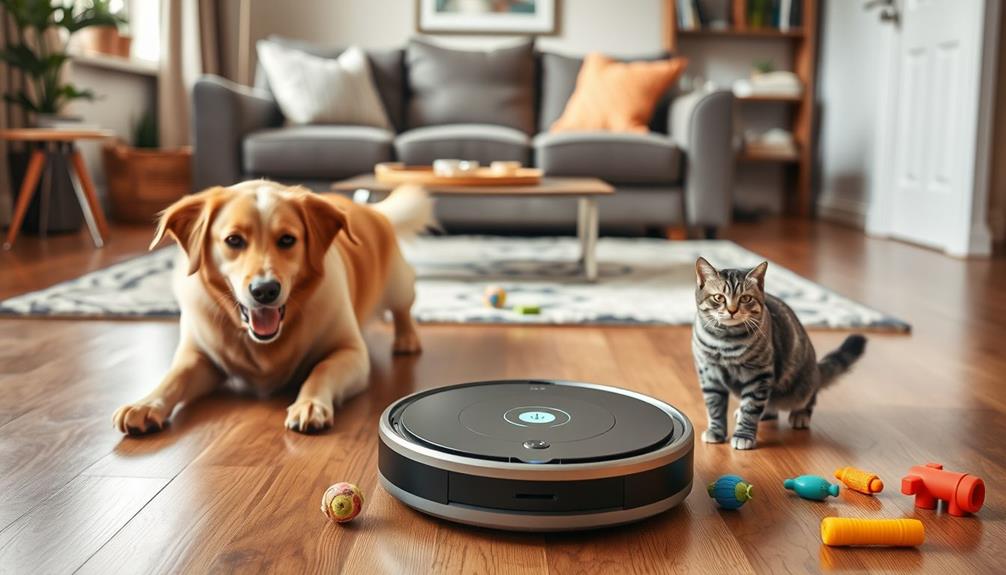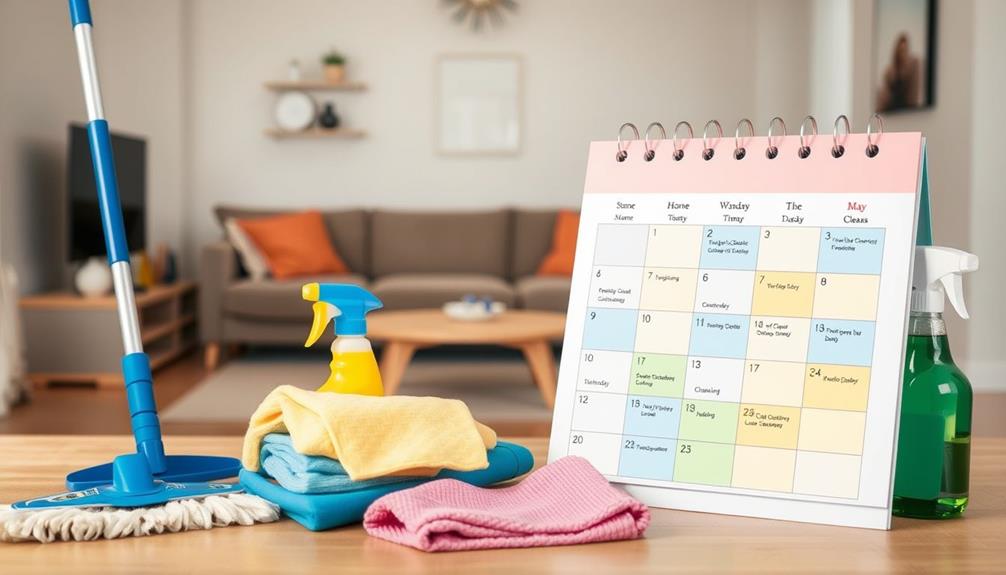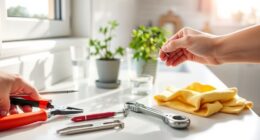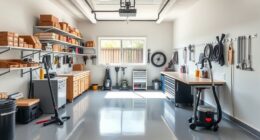To maintain your pool water pristine, it is crucial to establish a consistent cleaning routine – including skimming, brushing, and vacuuming on a weekly basis. Regularly check your water chemistry, aiming for a pH level between 7.4-7.6 and free chlorine levels ranging from 1-3 ppm. Remember to shock your pool after heavy use or rain to uphold sanitation levels. Use innovative cleaning tools such as robotic vacuums and tennis balls to remove oils and improve water clarity. Also, ensure your pool area is free from debris and inspect for leaks to prevent contamination. Stay tuned for additional tips and tricks to enhance your DIY maintenance skills! Understanding pool maintenance is vital for preserving your pool water quality. By consistently cleaning and testing, you can prevent the growth of algae and bacterial contamination. Additionally, investing in high-quality cleaning tools and staying informed about the latest pool maintenance techniques can help you achieve that crystal clear water all summer long. Keep an eye out for our upcoming articles on understanding pool maintenance for even more expert advice.
Key Takeaways
- Establish a consistent cleaning schedule, including skimming, brushing, and vacuuming, to maintain clear water and prevent algae growth.
- Regularly test water chemistry weekly, focusing on pH, alkalinity, and chlorine levels to ensure balanced conditions.
- Shock the pool weekly after heavy use or rainfall to boost chlorine levels and eliminate contaminants.
- Utilize robotic pool cleaners for efficient cleaning and to prevent dirt and algae buildup with minimal effort.
- Keep the surrounding area clean by regularly brushing the deck and maintaining landscaping to minimize debris entering the pool.
Importance of Pool Maintenance
Proper pool maintenance isn't just about aesthetics; it's vital for keeping your swimming environment safe and enjoyable. Neglecting the upkeep of your pool can lead to harmful bacteria growth and contamination, turning your oasis into a health hazard.
By consistently maintaining your pool water, you guarantee a clean and inviting space for family and friends, enhancing your backyard enjoyment and encouraging social interaction. Additionally, understanding local regulations and zoning requirements can help you make informed decisions about your pool's upkeep.
Moreover, regular maintenance saves you money over time. It greatly reduces long-term costs associated with major clean-ups and structural repairs. Seasonal checks can prevent issues like chemical corrosion and mineral build-up, preserving your pool's integrity.
When you take the time to care for your pool, you're not just investing in your enjoyment; you're protecting your investment.
It's also important to educate yourself on proper chemical handling and storage practices. This knowledge helps maintain water quality and safety, making sure that your pool water remains crystal clear.
Key Steps for Water Quality

Maintaining water quality is a fundamental aspect of pool care that directly impacts your swimming experience. To get started, establish a consistent cleaning schedule. Skim surface debris every other day, brush the pool walls at least twice a week, and vacuum the floor twice a week to keep your pool clean and inviting.
Additionally, consider using an air purifier to reduce allergens and improve the overall air quality around your pool area.
Use a water testing kit weekly to check and balance your water chemicals. Aim for a pH level between 7.4 and 7.6 and maintain total alkalinity between 100 to 150 ppm to guarantee safe swimming conditions.
Don't forget to monitor calcium hardness as well; keep it between 200-250 ppm for concrete pools and 175-225 ppm for vinyl pools to prevent etching or deposits.
Additionally, inspect and clean your pool filter monthly and replace it annually to guarantee efficient filtering and water quality maintenance.
Shock the pool weekly, especially after heavy use or rainstorms, to boost chlorine levels and eliminate contaminants.
Advanced Cleaning Techniques

When it comes to advanced cleaning techniques, robotic pool cleaners can save you a lot of time while keeping your pool spotless.
With their cutting-edge technology, these automated devices not only enhance cleaning efficiency but also optimize their paths for thorough coverage.
You might also be surprised by how effective tennis balls can be; they absorb oils and help maintain water clarity.
Incorporating these methods into your routine will elevate your pool maintenance game.
Robotic Cleaners Efficiency
Robotic pool cleaners are incredibly efficient, transforming the way you maintain your pool. These advanced machines not only save you time but also guarantee your pool remains spotless with minimal effort. With their ability to operate independently, you can program them to clean on a schedule, allowing you to enjoy your pool without constant supervision.
| Feature | Benefit | Impact |
|---|---|---|
| Advanced Navigation | Maps pool layout | Cleans efficiently, no missed spots |
| Energy Efficiency | Lowers electricity costs | Cost-effective option over time |
| Regular Use | Prevents dirt and algae buildup | Extends pool surface lifespan |
Tennis Balls Benefits
While robotic cleaners greatly enhance pool maintenance, you can further improve water quality with a simple and cost-effective tool: tennis balls.
These unassuming spheres can absorb oils, lotions, and other contaminants left by swimmers, helping to maintain clearer water and reducing the frequency of chemical adjustments. Additionally, using a reliable pool heater can guarantee that your pool remains at a comfortable temperature, making it more inviting for swims.
Placing a few tennis balls in the skimmer basket and around the pool can notably enhance water clarity by capturing surface debris and oils. Their impressive absorption capacity helps prevent the buildup of scum lines, which means you'll spend less time using additional cleaning products.
To keep your pool looking its best, make certain to regularly replace the tennis balls you use. Over time, they lose their oil absorption capabilities, so swapping them out guarantees they continue to perform effectively.
Understanding Water Chemistry

Water chemistry is the backbone of effective pool maintenance, and understanding its intricacies is vital for every pool owner. Keeping your chemical levels balanced isn't just about aesthetics; it's essential for a safe swimming environment.
A holistic approach to maintenance, similar to menopause management, emphasizes the importance of consistent monitoring and adjustments. Start by regularly testing and balancing your pH levels between 7.4 and 7.6. This range guarantees ideal swimmer comfort and enhances sanitation effectiveness.
Next, pay attention to total alkalinity, which should be maintained between 60 and 120 ppm. This stabilizes your pH levels and prevents harmful fluctuations. For chlorine effectiveness, maintain cyanuric acid levels between 50 and 100 ppm; this protects your sanitizer from degradation by sunlight.
Don't forget about calcium hardness! Aim for levels between 200-250 ppm for concrete pools and 175-225 ppm for vinyl pools. Maintaining these levels prevents surface etching and unwanted deposits.
If you notice any signs of poor water chemistry, like algae growth or changes in water clarity and odor, test and treat your water immediately to restore balance.
Regular Monitoring Practices
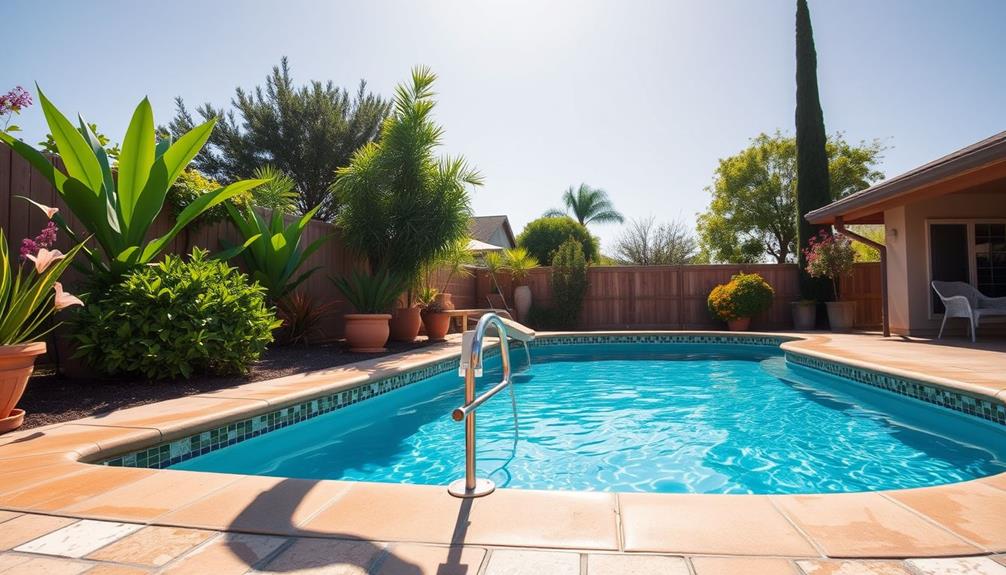
Effective monitoring practices are vital for maintaining a healthy pool. As a pool owner, you need to stay on top of your water chemistry to prevent issues that can lead to costly repairs.
Regular monitoring not only enhances water quality but also prolongs the lifespan of your pool equipment, making it a wise investment for any homeowner. Here are three key monitoring practices you should follow:
1. Test Water Chemistry Weekly: Check your pool water at least once a week. Verify the pH levels are between 7.4 and 7.6, and alkalinity stays within 100 to 150 ppm. This balance is essential for ideal sanitation.
For additional tips on what to look for in a home cleaning service, make sure to explore how cleanliness impacts your overall environment.
2. Monitor Calcium Hardness: Keep an eye on calcium hardness, aiming for 200-250 ppm in concrete pools and 175-225 ppm in vinyl pools. Incorrect levels can lead to surface damage or unsightly deposits.
3. Inspect Water Levels: Regularly check that your water levels sit at the middle of the skimmer. This keeps your filtration system running effectively and prevents pump damage.
Additionally, watch for signs of poor chemistry, like visible algae or unusual odors.
Clean skimmer baskets and pump filters regularly to maintain ideal circulation. By following these practices, you'll verify your pool remains crystal clear and inviting.
Surrounding Area Maintenance

Maintaining the surrounding area of your pool is just as important as monitoring water chemistry. A clean pool terrace helps prevent debris and leaves from washing into the water, which can promote algae and moss growth.
Regularly brushing the terrace with a deck brush can eliminate contaminants that might end up in your pool, enhancing the overall cleanliness of your swimming area. Additionally, incorporating outdoor play activities for children nearby can further discourage organic matter accumulation as kids engage in active play away from the pool itself.
Establish a cleaning schedule for surrounding area maintenance, ensuring you consistently remove organic matter that can lead to contamination. This not only enhances the aesthetics of your pool but also creates a more enjoyable swimming environment.
When cleaning, consider using a dedicated garden hose to avoid introducing contaminants, like clear or pink slime, that can come from contaminated hoses.
If you have a pool cleaner, make sure to check that it's functioning correctly, as it can help keep the water clear while you focus on maintaining the area around the pool.
Tips for Chemical Balance

Achieving the right chemical balance in your pool is fundamental for a safe and enjoyable swimming experience. Regularly testing your water guarantees that you maintain ideal conditions, especially the significant pH level, which should stay between 7.4 and 7.6.
This balance helps prevent skin irritation and makes chlorine more effective. Additionally, just as maintaining proper flushing practices is essential for plumbing health, verifying your pool's chemical balance contributes to overall water quality and sanitation toilet flushing practices.
Here are three key tips for maintaining chemical balance:
- Free Chlorine: Keep free chlorine levels between 1-3 ppm. This range effectively sanitizes your pool, protecting against germs and bacteria.
- Total Alkalinity: Maintain total alkalinity between 100-150 ppm. This stabilizes your pH levels and prevents fluctuations that could lead to problems.
- Calcium Hardness: Monitor calcium hardness, aiming for 200-250 ppm in concrete pools and 175-225 ppm for vinyl. This helps avoid surface damage and unsightly deposits.
Troubleshooting Common Issues

When you notice cloudy water or unusual odors, it's time to address potential chemical imbalances right away.
Regular maintenance, such as using a top robotic pool vacuum, can greatly help in keeping the water clean and clear.
Leaks can also be a concern, as they not only waste water but can mess with your pool's chemistry.
Identifying Water Clarity Issues
Cloudy water can quickly turn your pool into an uninviting space, signaling underlying chemical imbalances. To tackle this, start by testing your water to check for pH levels, alkalinity, and chlorine concentration.
Ideally, you want to maintain a pH between 7.4 and 7.6 for peak clarity. Regular maintenance is essential, much like how a best value vacuum cleaner offers effective performance without high costs.
Here are three common clarity issues to identify:
- Algae Growth: If your water turns green or murky, algae might be the culprit. Regularly brush the pool walls and vacuum to remove algae, and shock the pool weekly to eliminate contaminants.
- Chloramine Buildup: A strong chlorine smell often means there's a buildup of chloramines. This indicates that you need to shock the pool to restore proper chemical balance and improve clarity.
- Clogged Filter: Inspect your filter system monthly. A clogged filter can hinder water circulation and contribute to cloudiness. Verify your pool pump is clean and functioning correctly to maintain clear water.
If your water remains unclear despite these steps, consider using a water clarifier to help aggregate particles for easier filtration.
Addressing Chemical Imbalances
Maintaining a balanced chemical environment is essential for keeping your pool inviting and safe for swimmers. To achieve this, test your pool water at least once a week. Focus on key chemical levels, including pH (ideally between 7.4 and 7.6), total alkalinity (100-150 ppm), and free chlorine. Regular testing helps you spot chemical imbalances before they become major issues.
If you notice a strong chlorine smell, it may indicate chloramine buildup. Address this by shocking the pool to restore proper chlorine levels and eliminate contaminants.
Cloudy water can signal a problem too; even with normal chemical levels, adding a water clarifier can help bind small particles for better filtration.
Stay vigilant for signs of poor water chemistry, like visible algae or shifts in water clarity. These issues require immediate attention with appropriate chemical solutions.
Fixing Leaks Promptly
Chemical imbalances can be a sign of underlying issues, including leaks that not only compromise water quality but also lead to costly repairs.
To keep your pool in top shape, it's crucial to fix leaks promptly. Regularly monitor your pool water level; if it consistently drops, you might've a leak.
Here are three effective ways to troubleshoot:
- Bucket Test: Fill a bucket with water and place it on the pool step. If the pool's water level drops more than the bucket's over a few days, you likely have a leak.
- Inspect Common Areas: Check skimmer baskets, return jets, and pool lights for wear and tear. These spots often need sealing or repair to prevent leaks.
- Dye Test: Apply dye around suspected leak areas. If the dye moves toward a crack or hole, that confirms a leak requiring your immediate attention.
If you can't locate or fix the leak yourself, consider consulting a professional.
Untreated leaks can lead to significant water loss and higher repair costs, so addressing them early saves you money and hassle.
Frequently Asked Questions
How Do I Keep My Pool Water Crystal Clear?
To keep your pool water crystal clear, you've gotta stay on top of your maintenance routine.
Test and balance your pool chemicals weekly, ensuring pH and alkalinity levels are just right.
Skim the surface every other day, brush the walls twice a week, and vacuum the floor regularly.
Don't forget to shock the pool weekly and clean the filter monthly.
If the water turns cloudy, consider using a clarifier after checking your chemical levels.
What Home Remedy Can I Use to Clear My Pool Water?
Think of your pool water as a fine wine; it deserves to shine.
To clear it up, try using baking soda to raise alkalinity and stabilize pH levels between 7.4 and 7.6. You can also add a diluted vinegar solution to deter algae and balance acidity.
Finally, toss in a few tennis balls to absorb oils and contaminants.
With these remedies, your pool will sparkle like that perfect vintage.
What Chemicals Make a Pool Crystal Clear?
To make your pool crystal clear, focus on a few key chemicals.
First, maintain free chlorine levels between 1-3 ppm for sanitation. Adjust the pH to stay between 7.4 and 7.6 for ideal chlorine effectiveness.
Keep total alkalinity between 100-150 ppm to stabilize pH. Use cyanuric acid at 50-100 ppm to protect chlorine from sunlight.
What Clears a Cloudy Pool Fast?
Clearing a cloudy pool is like polishing a gem; it takes the right steps to shine.
Start by testing your water chemistry, ensuring pH levels sit between 7.4 and 7.6. If it's off, adjust accordingly.
Shock your pool with chlorine after heavy use or rain, then consider adding a water clarifier to help filter out tiny particles.
Regularly clean your filter and debris for a sparkling, clear oasis you can enjoy!
Conclusion
By staying on top of your pool maintenance, you'll enjoy crystal clear water all summer long. Imagine hosting a backyard barbecue, and your friends can't stop raving about how inviting your pool looks. With regular monitoring and proper chemical balance, you can create that perfect oasis. Remember, a little effort goes a long way—keeping your pool clean and safe will enhance your enjoyment and create lasting memories with family and friends. Plunge in and enjoy!
